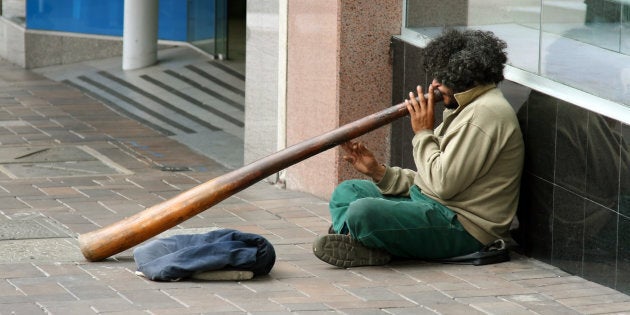
Reconciliation is an issue that is forcefully pressing on our nation's conscience. Negotiations continue on constitutional recognition and we have our first female Aboriginal MP in the House of Representatives. But alongside this evidence of progress are reminders of the wrongs of our colonial history, from the abuses at Don Dale to racism at the football ground and the ongoing disadvantages faced by Aboriginal and Torres Strait Islander young people today.
Today we released a report comparing the responses from over 1000 Aboriginal and Torres Strait Islander young people with responses from non-Indigenous young people.
It's a sad, but perhaps not surprising, read. While we see young people sharing many of their aspirations for further education and employment, the report provides further evidence that Indigenous young people are facing many more serious challenges than their non-Indigenous peers.
Aboriginal and Torres Strait Islander young people were more likely to have spent time away from home in the past three years because they felt they couldn't return, and to have stayed away more frequently and for longer than their non-Indigenous peers. Without a safe and stable home, these young people face a high risk of homelessness.
Homelessness is one of the areas where systemic disadvantage is most palpable. As the leader of an organisation that aims to reduce homelessness, I constantly grapple with the fact that Indigenous Australians make up 25 percent of the homeless population even though they comprise only 2.5 per cent of the population.
Overcrowding in remote communities is at crisis levels and the over-representation of Aboriginal and Torres Strait Islander young people in both out-of-home care and juvenile justice institutions are leading contributors to homelessness and are a national shame.
This is about more than just having a roof over your head as you grow up. In an over-crowded house, it is harder to get to school or work and your health and safety suffers. Without a job or a good education, it is harder to afford a house. And the cycle continues throughout life and across generations.
Much more can and should be done.
We have a responsibility to support all young people to reach their potential. But this report shows that we aren't doing that. Far too many Aboriginal and Torres Strait Islander young people are falling through the cracks.
Governments must prioritise an urgent review of how we fund and deliver programs to ensure we are working alongside Aboriginal and Torres Strait Islander young people to overcome the barriers in front of them.
The community sector has called for the Government to commit to a target of halving homelessness by 2025. We know how to achieve that but we need the political leadership, a solid plan and, yes, the funds to do it.
If we as a society are serious about homelessness, then we must address the situation of young Aboriginal and Torres Strait Islander people who are experiencing or at risk of homelessness as an urgent priority.
We need to empower Aboriginal and Torres Strait Islander organisations, and develop meaningful partnerships at the national, regional and community level between Aboriginal and Torres Strait Islander communities and organisations and non-indigenous ones.
We have called for a further 4,200 new Aboriginal-owned and controlled homes in remote communities and regional centres, to address overcrowding.
Without adequate housing, we cannot expect young people to go to school or go to work. And without good health, a solid education and strong job prospects, young people cannot hold much hope of having their own home in the future. We need to address both housing needs and the broader underlying and intersecting disadvantage.
The good news is that, where we do improve housing and provide wraparound supports, these sustainable exits from homelessness result in significant savings for government from crisis accommodation, health and justice costs.
Investing in the future of our nation and in Aboriginal and Torres Strait Islander young people -– and putting them at the centre of policy and programs -– is an urgent moral, social and economic imperative.